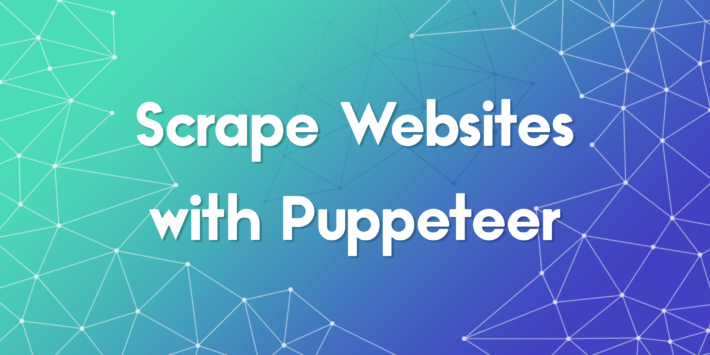How to Scrape Google Shopping Results: A Step-by-Step Guide with ProxyTee

Google Shopping is a goldmine of public e-commerce data that can help businesses stay competitive. In the fast-paced world of online retail, accessing accurate product and pricing information is essential. Web scraping offers a powerful way to gather these insights—tracking market trends, competitor pricing, and detailed product listings. This tutorial will guide you through how to scrape Google Shopping for publicly available data using Python, while also showing how ProxyTee enhances the process with reliable IP rotation and geo-targeting.
What is Google Shopping?
Google Shopping, formerly known as Google Products Search, is a service that allows users to browse, compare, and shop for products from various suppliers. It’s a valuable resource for both consumers seeking the best deals and retailers aiming to advertise their products online.
Google Shopping Results Page Structure Overview
Google Shopping pages can be categorized into three main types:
- Search Page: Displays a list of items based on the user’s search query, including product titles, descriptions, prices, and availability.
- Product Page: Provides detailed information on a single product, such as key features, specifications, reviews, and prices from multiple retailers.
- Pricing Page: Lists all retailers offering a specific product along with their prices, delivery options, and store information.
Each of these page types offers different kinds of data that can be useful for your analysis.
The Challenges of Scraping Google Shopping
While feasible, scraping Google Shopping is not always straightforward. Google is adept at detecting automated requests, and rendering dynamic content via JavaScript adds complexity to the process. Utilizing a robust proxy solution and a well-structured scraping script is essential to overcome these hurdles.
Enhance Your Scraping with ProxyTee
ProxyTee is designed to provide an affordable, reliable, and user-friendly solution for web scraping. With features like unlimited bandwidth, global IP coverage with over 20 million IPs across 100+ countries, and auto-rotation, it ensures you can scrape Google Shopping without disruptions. ProxyTee also supports both HTTP and SOCKS5 protocols and integrates easily with a variety of tools thanks to the simple API.
The core offering, Unlimited Residential Proxies, delivers rotating residential proxies with unlimited bandwidth and granular geo-targeting, often at a cost that’s up to 50% lower than competitors, allowing you to extract data efficiently and effectively. Whether you need Residential Proxies or Datacenter Proxies, ProxyTee has options to fit your needs.
Step-by-Step Guide for Scraping Google Shopping Results Using Python and ProxyTee
This guide will help you to set up the basics of scraping. For real-world scraping projects, you’d integrate these methods with ProxyTee‘s rotating proxies.
1️⃣ Set Up Python and Install Required Libraries
To get started, you’ll need Python 3.10+ installed. Use pip to install the necessary packages:
pip install requests pandasrequestswill be used to send HTTP requests.pandaswill be used to manage the extracted data.
2️⃣ Set Up a Payload
When scraping search, product, or pricing pages, the payload parameters are important to define your search queries. Here’s a detailed breakdown of some parameters:
| Parameter | Description | Default Value |
|---|---|---|
source |
Type of scraper to use | google_shopping_search, google_shopping_product, or google_shopping_pricing |
domain |
Domain name | com |
query |
The search query for the search page, product ID for the product or pricing pages | – |
pages |
Number of pages to retrieve | 1 |
context:sort_by |
Sort products list | r (default), rv (review score), p (increasing price), pd (decreasing price) |
context:min_price |
Minimum price filter | – |
context:max_price |
Maximum price filter | – |
parse |
Set to true for structured JSON data |
– |
Example payload for searching ‘levis’ with price filter and sorting:
payload = {
'source': 'google_shopping_search',
'domain': 'com',
'query': 'levis',
'pages': 1,
'context': [
{'key': 'sort_by', 'value': 'pd'},
{'key': 'min_price', 'value': 30}
],
'parse': 'true',
}
3️⃣ Send a POST Request
Use the requests library to send a POST request:
response = requests.post(
'https://your-scraping-api.com/v1/queries',
auth=('username', 'password'), # Replace with ProxyTee credentials if applicable
json=payload
)
4️⃣ Extract and Structure Product Data from JSON Response
The response from Google Shopping will be in JSON. You will need to parse and extract the specific fields of data based on the type of page that was queried (search, product, pricing). This example is for extracting product information from a search query:
result = response.json()['results'][0]['content']
products = result['results']['organic']
df = pd.DataFrame(columns=['Product Title', 'Price', 'Store'])
for p in products:
title = p['title']
price = p['price_str']
store = p['merchant']['name']
df = pd.concat([pd.DataFrame([[title, price, store]], columns=df.columns), df], ignore_index=True)
5️⃣ Save Extracted Data
Finally, save the extracted data into a CSV or JSON file:
df.to_csv('google_shopping_search.csv', index=False)
df.to_json('google_shopping_search.json', orient='split', index=False)
Why You Should Scrape Google Shopping to Stay Ahead in Business
Scraping Google Shopping can unlock critical business insights if done effectively. With ProxyTee‘s reliable proxy solutions and this guide, you are now equipped to gather necessary information to boost your business’s competitiveness. Explore ProxyTee’s flexible pricing plans and learn more about use cases today to see how ProxyTee can enhance your data gathering.


